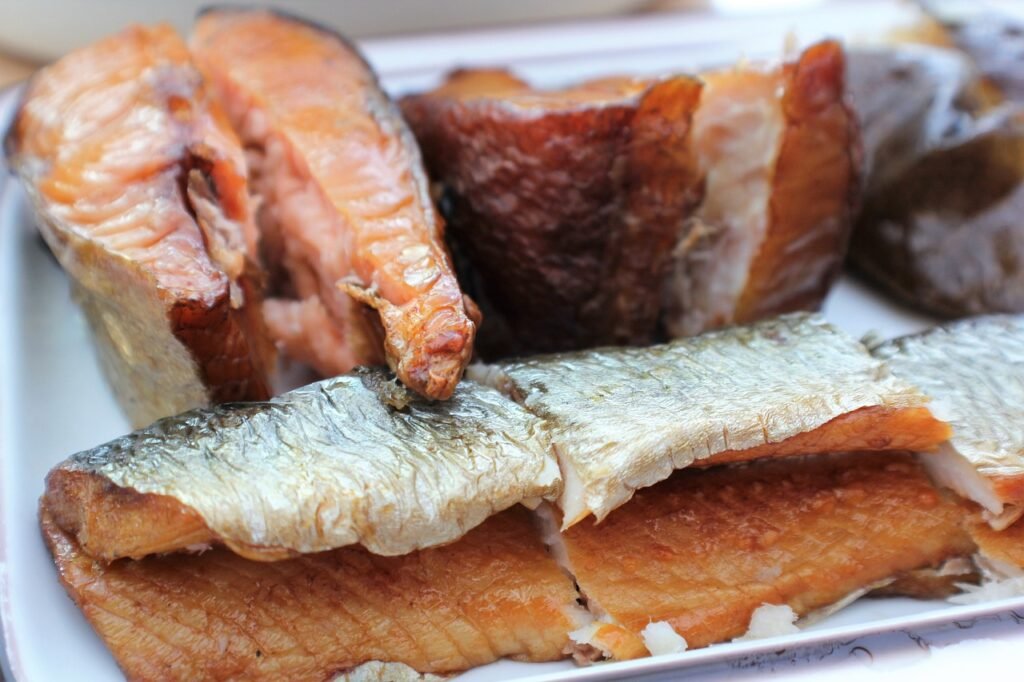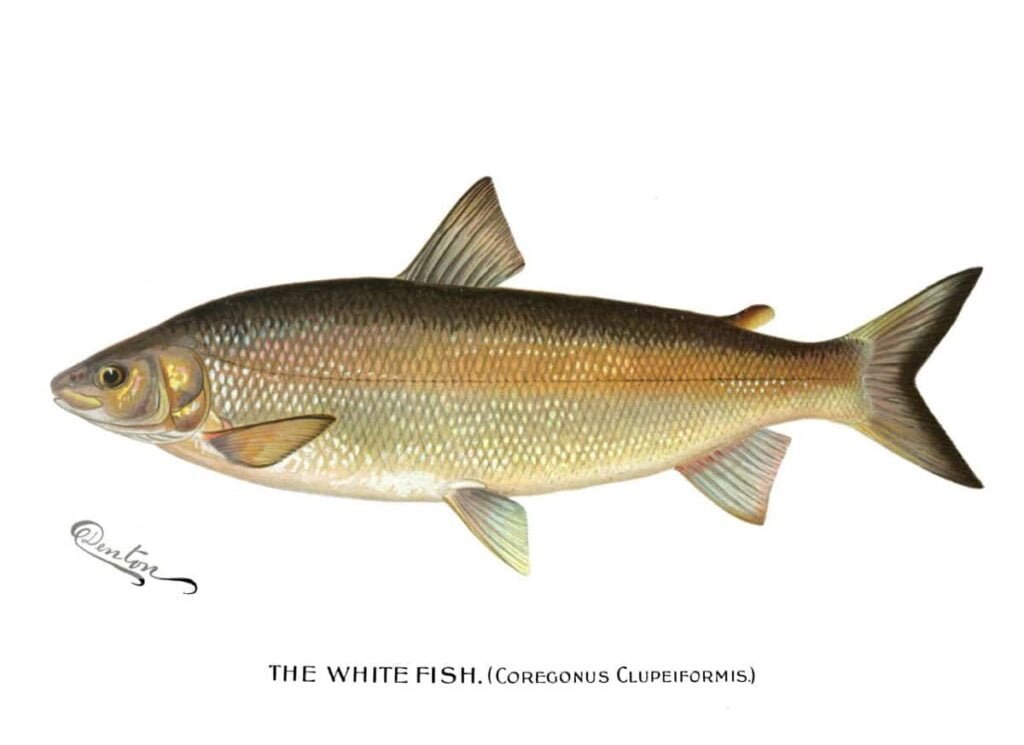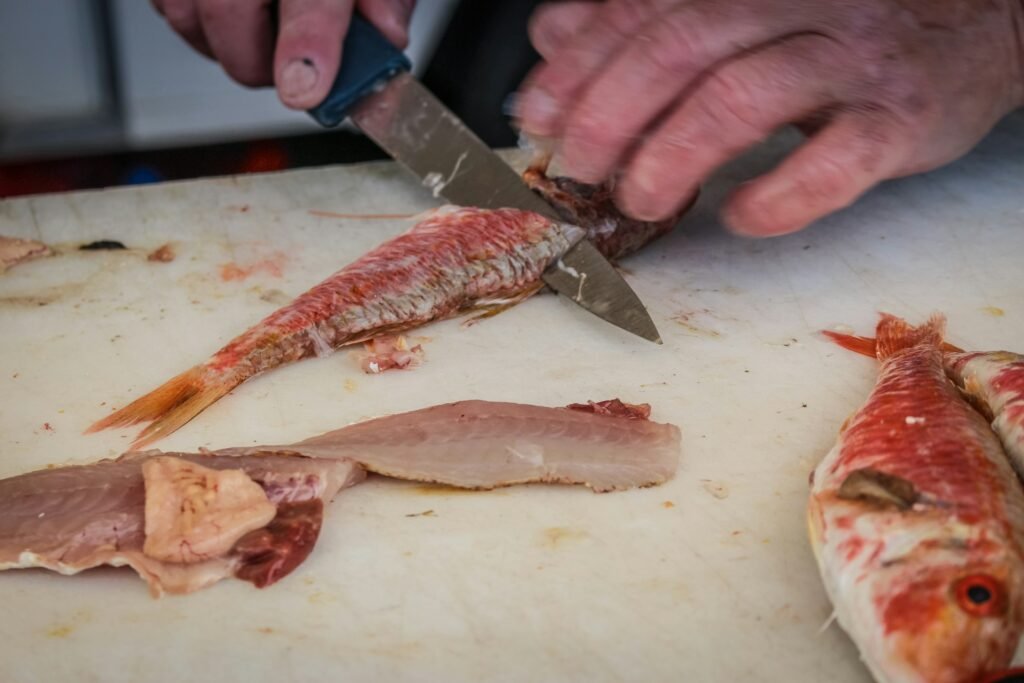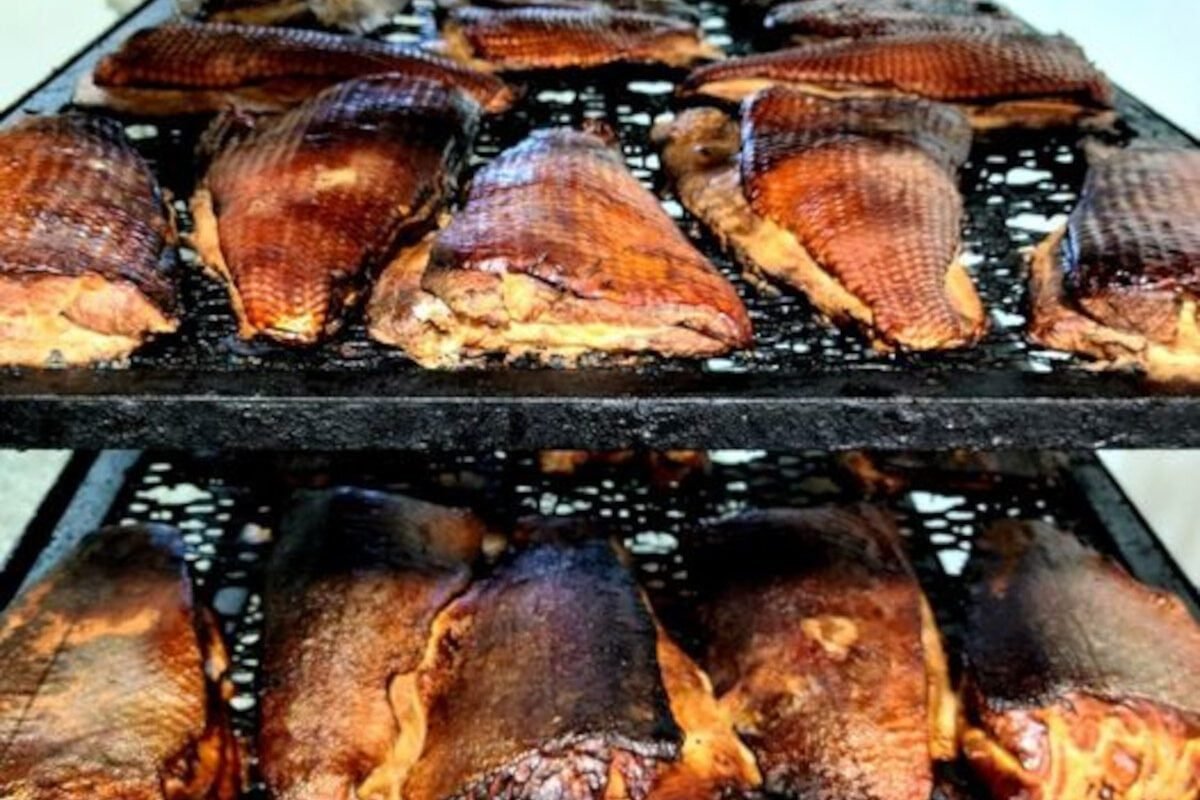Smoking fish is both an art and a science practiced for centuries. It involves flavoring and preserving fish through the use of smoke. This ancient technique enhances the fish’s taste and extends its shelf life, making it a valuable skill for any seafood enthusiast. In this article, we will explore the intricate world of how to smoke fish, exploring the various methods and types of fish suitable for smoking and the step-by-step process of smoking fish in a smoker. Whether you are a seasoned chef looking to elevate your culinary skills or a beginner eager to learn a new cooking technique, mastering the art of smoking fish will open up a world of delicious possibilities in your kitchen.
Featured Image is Courtesy of Bay Port Fish Company
Table of Contents – How To Smoke Fish
Understanding the Basics of Smoking Fish

To truly appreciate the art of smoking fish, it’s essential to understand the fundamentals of this ancient culinary practice. Smoking fish involves infusing fish with flavorful smoke while preserving it for extended enjoyment. This technique dates back centuries when our ancestors used smoke to enhance their catch’s taste and shelf life.
Historically, smoking fish was vital for preserving food before modern refrigeration. By exposing fish to smoke from burning wood chips or herbs, the flavors would penetrate the flesh, creating a unique and savory taste profile. The smoke acted as a natural preservative, inhibiting bacterial growth and extending the fish’s edibility.
Today, the benefits of smoking fish go beyond preservation. It’s a way to add depth and complexity to the natural flavors of the fish, creating a delicious and versatile culinary experience. Whether you’re a seafood connoisseur or a cooking enthusiast looking to expand your skills, mastering the basics of smoking fish will elevate your dishes to new heights of flavor and enjoyment.
Types of Fish Suitable for Smoking

When it comes to smoking fish, selecting the right type of fish is crucial to achieving that perfect smoky flavor. Some popular fish types that are ideal for smoking include salmon, trout, and mackerel. These fish are known for their oil-rich flesh, which absorbs smoke beautifully, resulting in a rich and flavorful end product.
- Salmon: With its firm texture and high-fat content, salmon is a favorite choice among smoking enthusiasts. Its natural oils infuse well with the smoke, creating a delectable taste profile.
- Trout: Offers a delicate flavor that pairs wonderfully with the smokiness imparted during the smoking process.
- Mackerel: Known for its robust flavor, mackerel is another excellent option for smoking, adding a bold taste to your smoked fish dishes.
- Whitefish: This popular fish is widely available in the Great Lakes region and is typically priced inexpensively. Great Lakes Whitefish holds a gentle smoked flavor and is considerably less fatty.
When selecting fish for smoking, look for fresh, high-quality fish with firm flesh. The characteristics that make certain fish ideal for smoking include oil content, texture, and flavor profile. Opt for fish that are not too lean, as the fat content plays a significant role in absorbing the smoky flavors during the smoking process. By choosing the best fish for smoking, you can ensure a delicious and satisfying end result that will impress your taste buds and those of your guests.
Preparing Fish for Smoking

Proper preparation is key to achieving the best results before you start smoking your fish. Begin by cleaning and filleting the fish to ensure it’s ready for the smoking process. Removing scales, guts, and bones will enhance the flavor and make it easier to smoke evenly.
Next, the brining process is crucial for adding flavor and moisture to the fish. Brining helps the fish retain its natural juices during smoking, preventing it from drying out. It also allows the fish to absorb the smoky flavors more effectively, resulting in a more flavorful end product. To brine your fish, prepare a mixture of salt, sugar, and water and let the fish soak in it for the recommended time.
Classic Fish Brine Recipe
Ingredients:
- 4 cups of water
- 1/2 cup of kosher salt
- 1/2 cup of brown sugar
- 1 tablespoon of black peppercorns
- 1 tablespoon of whole cloves
- 1 bay leaf
- 2 cloves of garlic, minced
- Juice of 1 lemon
- 1 tablespoon of dried thyme (or 2 sprigs of fresh thyme)
- 1 tablespoon of dried dill (or 2 sprigs of fresh dill)
Instructions:
- Prepare the Brine Solution:
- In a large pot, combine 4 cups of water, kosher salt, and brown sugar.
- Heat the mixture over medium heat, stirring occasionally, until the salt and sugar are completely dissolved.
- Remove from heat and let it cool to room temperature.
- Add Aromatics:
- Once the brine has cooled, add the black peppercorns, whole cloves, bay leaf, minced garlic, lemon juice, dried thyme, and dried dill to the pot.
- Stir well to combine all the ingredients.
- Brine the Fish:
- Place the fish fillets or whole fish in a large, non-reactive container or a resealable plastic bag.
- Pour the brine over the fish, ensuring it is fully submerged. If necessary, add more water to cover the fish completely.
- Cover the container or seal the bag, then refrigerate for 4 to 6 hours for fillets or 8 to 12 hours for whole fish. Adjust the brining time based on the thickness of the fish.
- Rinse and Dry:
- After brining, remove the fish from the brine and rinse it thoroughly under cold water to remove excess salt.
- Pat the fish dry with paper towels and place it on a rack to air-dry for about an hour. This will help form a pellicle, a tacky surface that allows the smoke to adhere better.
- Smoke the Fish:
- Preheat your smoker to the desired temperature (typically between 175°F and 225°F).
- Add your choice of wood chips (like apple, cherry, or hickory) to the smoker.
- Smoke the fish until it reaches the desired level of doneness, usually 1.5 to 3 hours depending on the thickness and type of fish.
Enjoy your perfectly brined and smoked fish, packed with rich, smoky flavor!
After brining, dry the fish properly before placing it in the smoker. Drying the fish forms a pellicle, a tacky layer on the surface that helps the smoke adhere to the fish, enhancing the smoky flavor. Properly dried fish will also develop a nice glaze during smoking, adding to its visual appeal.
By following these essential steps in preparing your fish for smoking, you set the foundation for a delicious and perfectly smoked dish that will delight your taste buds and impress your guests.
How to Smoke Fish in a Smoker

Types of smokers commonly used for smoking fish include electric, charcoal, and gas smokers. Each type offers unique advantages regarding convenience, flavor, and control over the smoking process. Electric smokers are known for their ease of use and consistent temperature control, making them ideal for beginners. On the other hand, charcoal smokers provide a traditional smoky flavor that many enthusiasts prefer, although they require more hands-on monitoring to maintain temperature.
When setting up your smoker, it’s essential to follow a step-by-step guide to ensure optimal results:
- Assemble the smoker: Follow the manufacturer’s instructions, ensuring all components are in place.
- Add wood chips or pellets: Choose your preferred wood chips or pellets to infuse the fish with delicious smoky flavors.
- Preheat the smoker: Properly preheat the smoker to the recommended temperature before adding the fish to ensure even cooking and smoking.
Temperature control is crucial when smoking fish to achieve the perfect balance of tenderness and smokiness. Monitoring the temperature throughout the smoking process is key to preventing under or overcooking. Different types of fish require specific smoking times and temperatures to reach the desired level of doneness. Delicate fish like trout may need less time in the smoker than denser fish like salmon.
By mastering the art of smoking fish in a smoker, you can unlock a world of culinary possibilities and create delectable smoked fish dishes that will impress your family and friends. Experimenting with different wood flavors, smoking times, and techniques will allow you to develop your signature smoked fish recipe that showcases your unique culinary style.
How to Smoke Fish for Preservation
Traditional methods of smoking fish for preservation have been practiced for centuries, ensuring a longer shelf life and a unique flavor profile. Historically, smoking fish was a way to preserve the catch for extended periods without refrigeration. This method enhanced the fish’s taste and helped retain essential nutrients. It is perfect for cabin camping, where refrigeration can be iffy. Today, while modern refrigeration methods are prevalent, smoking fish for preservation remains a popular choice for many culinary enthusiasts.
When preserving smoked fish, traditional techniques involve using natural wood smoke to cure the fish, creating a protective barrier against bacteria and spoilage. Modern advancements have introduced innovative equipment such as vacuum sealers and specialized containers that aid in extending the shelf life of smoked fish. These tools help maintain the freshness and flavor of the smoked fish for longer periods, making it convenient to enjoy your favorite smoked delicacies at any time.
Proper storage is essential to ensure the quality and safety of your preserved smoked fish. Store your smoked fish in airtight containers or vacuum-sealed bags to prevent exposure to air and moisture, which can lead to spoilage. Additionally, keeping the fish refrigerated at the optimal temperature will help maintain its texture and flavor. Following these storage tips, you can enjoy your homemade smoked fish for an extended period while savoring its rich, smoky taste.
Best Smoked Fish Recipes

Exploring popular smoked fish recipes is a gateway to discovering the rich flavors and textures of smoked fish. Whether you are a seasoned or novice chef, experimenting with different smoked fish recipes can add a gourmet touch to your meals.
- Smoked Salmon: This timeless favorite is known for its delicate taste and versatility in various dishes. From elegant appetizers to hearty main courses, smoked salmon never fails to impress with its distinct smokiness and buttery texture.
- Smoked Fish Dip: This creative recipe offers a refreshing twist on familiar flavors. The creamy and savory notes of smoked fish dip make it a crowd-pleasing party favorite, perfect for spreading on crackers or pairing with fresh vegetables.
- Smoked Fish Salad: Combines the smoky essence of the fish with crisp greens and zesty dressings, creating a light and satisfying dish ideal for a quick lunch or a side accompaniment.
Exploring the realm of best-smoked fish recipes opens up a world of culinary possibilities, where the art of smoking fish transforms simple ingredients into gourmet masterpieces. Whether you prefer classic elegance or innovative twists, these recipes will elevate your dining experience and impress your guests with the irresistible allure of smoked fish.
Troubleshooting Common Issues
When it comes to smoking fish, encountering common issues like over-smoking, under-smoking, or uneven smoking can be frustrating. However, with the right knowledge and techniques, these problems can easily be resolved.
- Over-smoking: If the fish becomes excessively smoky and bitter, consider adjusting the smoking time or reducing the amount of wood chips used.
- Under-smoking: Results in a lack of flavor and inadequate preservation, may require longer smoking durations or adding more wood chips for a robust smoky taste.
- Uneven smoking: To ensure uniform smoking, rotate the fish during the smoking process and maintain a steady temperature inside the smoker. These simple adjustments can make a significant difference in the quality of your smoked fish.
By following these troubleshooting tips and mastering the art of smoking fish, you can create perfectly smoked delicacies every time, impressing your guests and elevating your culinary skills to new heights.
Final Thoughts on How to Smoke Fish
To wrap up our journey on how to smoke fish, let’s recap the essential steps and tips we’ve covered. Understanding the basics of smoking fish is crucial for a successful outcome. From selecting the right type of fish to preparing it meticulously, each step contributes to the final flavor and texture. When using a smoker, ensure you maintain the ideal temperature and smoking time to achieve that perfect balance of smokiness.
Remember, smoking fish is not just a culinary technique; it’s an art form that allows you to preserve and enhance the natural flavors of the fish. Experiment with different wood chips and seasonings to create your signature smoked fish recipe. Embrace the process, enjoy the aromas wafting from your smoker, and savor the satisfaction of creating a delicacy that delights your taste buds and those of your loved ones.
How to Smoke Fish: Step-by-Step Guide
- Select the Fish:
- Choose oil-rich fish like salmon, trout, or mackerel for best results.
- Ensure the fish is fresh, high-quality, and has firm flesh.
- Prepare the Fish:
- Clean and fillet the fish, removing scales, guts, and bones.
- Brine the fish in a mixture of water, kosher salt, brown sugar, black peppercorns, whole cloves, bay leaf, minced garlic, lemon juice, thyme, and dill.
- Brine for 4-6 hours for fillets or 8-12 hours for whole fish.
- Rinse the fish under cold water and pat dry.
- Allow the fish to air-dry on a rack for about an hour to form a pellicle.
- Set Up the Smoker:
- Choose your smoker type: electric, charcoal, or gas.
- Assemble the smoker according to the manufacturer’s instructions.
- Add your choice of wood chips (apple, cherry, hickory, etc.) to the smoker box.
- Preheat the smoker to the recommended temperature (175°F to 225°F).
- Smoke the Fish:
- Place the fish in the preheated smoker.
- Monitor the temperature throughout the smoking process to ensure even cooking.
- Smoke the fish for 1.5 to 3 hours, depending on the thickness and type of fish.
- Rotate the fish during smoking to achieve even smokiness.
- Check for Doneness:
- The fish should be opaque and flake easily with a fork.
- Ensure the internal temperature of the fish reaches at least 145°F for safe consumption.
- Store the Smoked Fish:
- Cool the smoked fish completely.
- Store in airtight containers or vacuum-sealed bags.
- Refrigerate or freeze the smoked fish to extend shelf life.
- Enjoy Your Smoked Fish:
- Experiment with different wood chips and seasonings to create unique flavors.
- Try various recipes like smoked fish dip or smoked fish salad.
- Share your delicious smoked fish creations with family and friends.
Frequently Asked Questions (FAQs)
How do I smoke fish in a smoker?
Select oil-rich fish like salmon, trout, or mackerel.
Clean, fillet, and brine the fish for 4-6 hours (fillets) or 8-12 hours (whole fish).
Rinse and dry the fish to form a pellicle.
Preheat your smoker to 175°F to 225°F, add wood chips, and place the fish inside.
Smoke the fish for 1.5 to 3 hours, rotating for even smokiness, until it flakes easily with a fork and reaches an internal temperature of 145°F.
What are the best types of fish for smoking?
The best types of fish for smoking are those with high oil content and firm flesh, such as salmon, trout, and mackerel. These fish absorb smoke well, resulting in rich and flavorful smoked fish.
How can I ensure my smoked fish is properly preserved?
To preserve smoked fish, store it in airtight containers or vacuum-sealed bags to prevent exposure to air and moisture. Keep the fish refrigerated at the optimal temperature. For long-term storage, you can freeze the smoked fish. Proper storage helps maintain its texture and flavor, extending its shelf life.
What are some common issues when smoking fish and how can I troubleshoot them?
Over-smoking: Adjust the smoking time or reduce the amount of wood chips used.
Under-smoking: Increase smoking duration or add more wood chips for a robust smoky taste.
Uneven smoking: Rotate the fish during smoking and maintain a steady temperature inside the smoker to ensure uniform smokiness.

